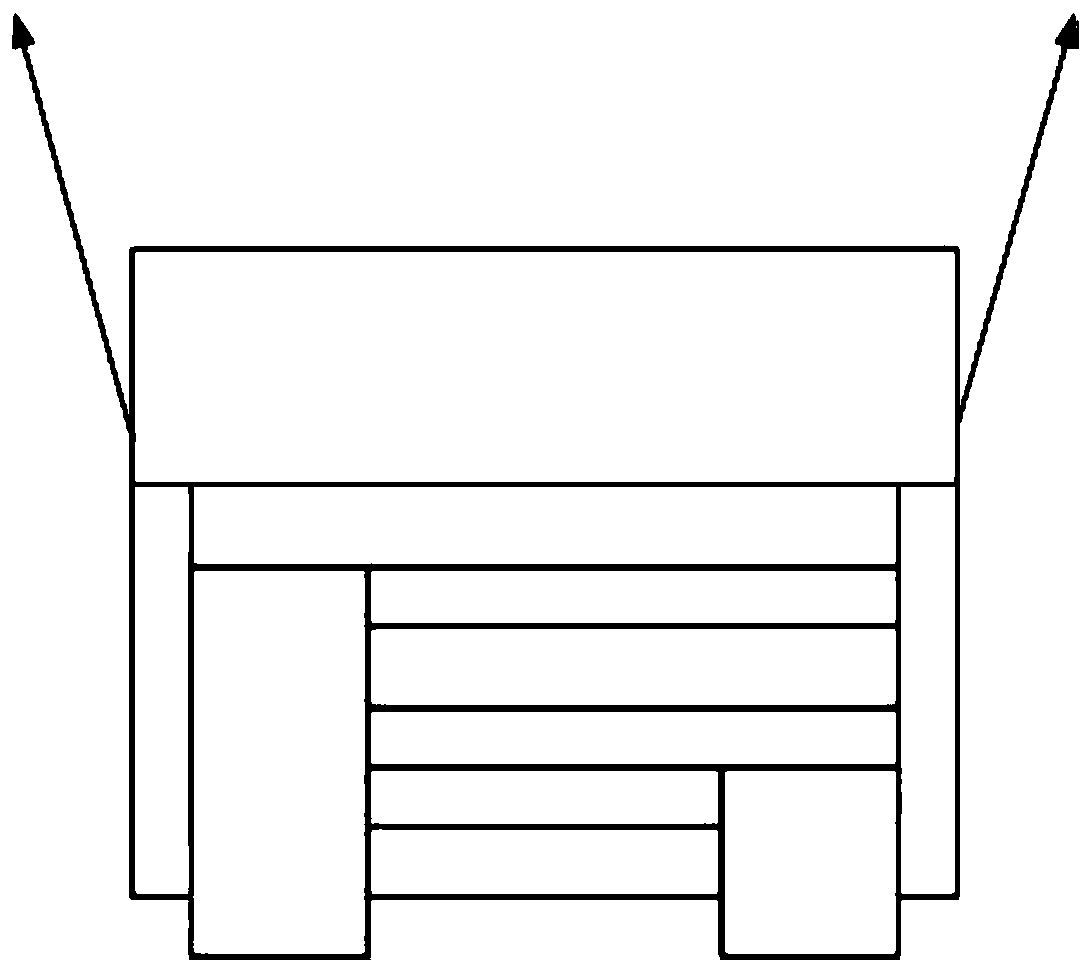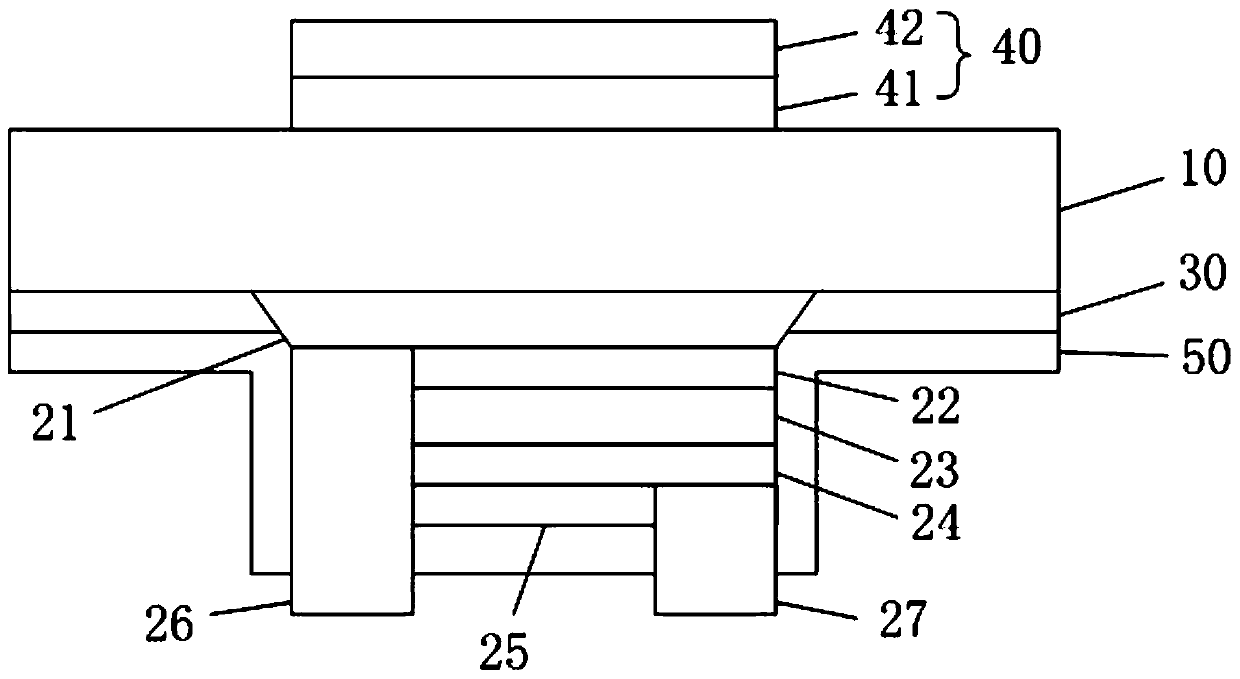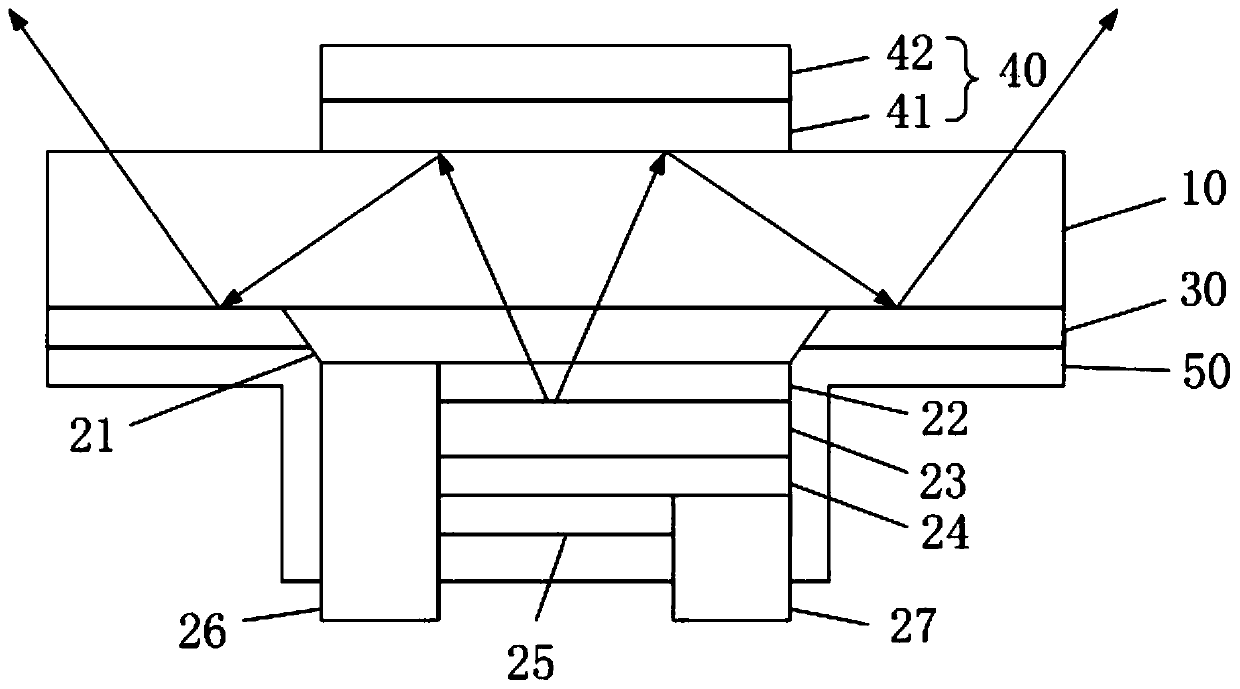Inverted LED chip for backlight display and manufacturing method thereof
An LED chip and backlight display technology, applied in electrical components, circuits, semiconductor devices, etc., can solve problems such as increasing the thickness of the display screen, and achieve the effect of increasing the light output angle
- Summary
- Abstract
- Description
- Claims
- Application Information
AI Technical Summary
Problems solved by technology
Method used
Image
Examples
Embodiment Construction
[0032] In order to make the object, technical solution and advantages of the present invention clearer, the present invention will be further described in detail below in conjunction with the accompanying drawings.
[0033] see figure 2 , a flip-chip LED chip for backlight display provided by the present invention includes a substrate 10 , a light-emitting structure, a first reflective layer 30 and a scattering layer 40 .
[0034] The front of the substrate 10 includes a light-emitting area and a reflective area, the reflective area is located around the light-emitting area, the back of the substrate 10 is provided with a scattering area and a light-emitting area, and the reflective area is located around the light-emitting area, so The light emitting area is located around the scattering area, and the scattering area is located above the light emitting area.
[0035] The light emitting structure of the present invention is set in the light emitting area, and the first refle...
PUM
| Property | Measurement | Unit |
|---|---|---|
| Thickness | aaaaa | aaaaa |
| Thickness | aaaaa | aaaaa |
Abstract
Description
Claims
Application Information
 Login to View More
Login to View More - R&D
- Intellectual Property
- Life Sciences
- Materials
- Tech Scout
- Unparalleled Data Quality
- Higher Quality Content
- 60% Fewer Hallucinations
Browse by: Latest US Patents, China's latest patents, Technical Efficacy Thesaurus, Application Domain, Technology Topic, Popular Technical Reports.
© 2025 PatSnap. All rights reserved.Legal|Privacy policy|Modern Slavery Act Transparency Statement|Sitemap|About US| Contact US: help@patsnap.com



